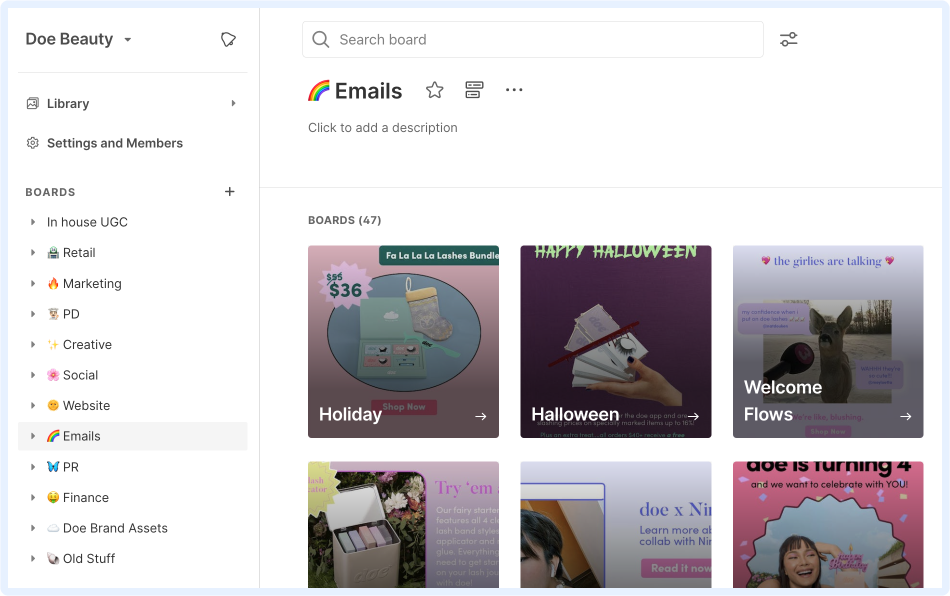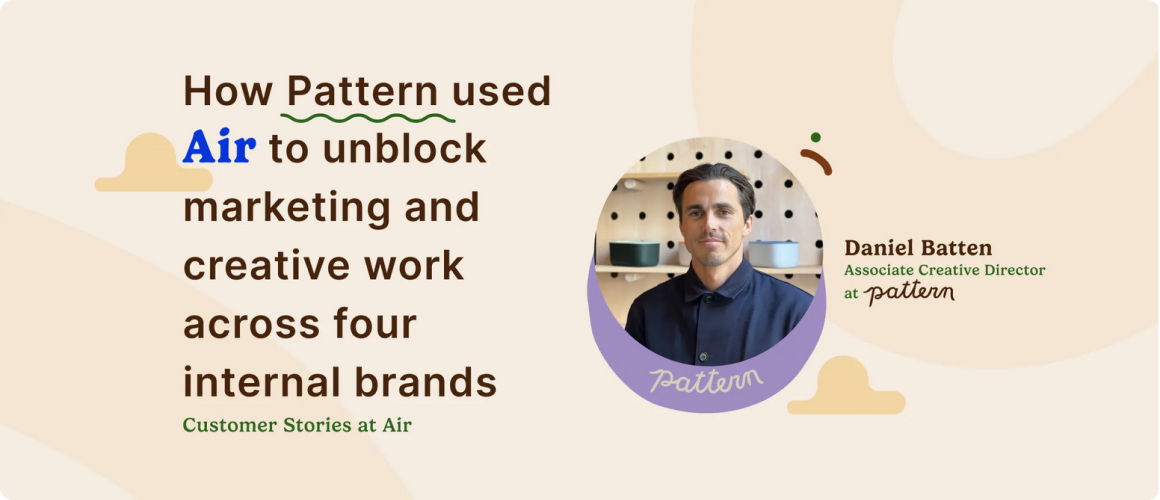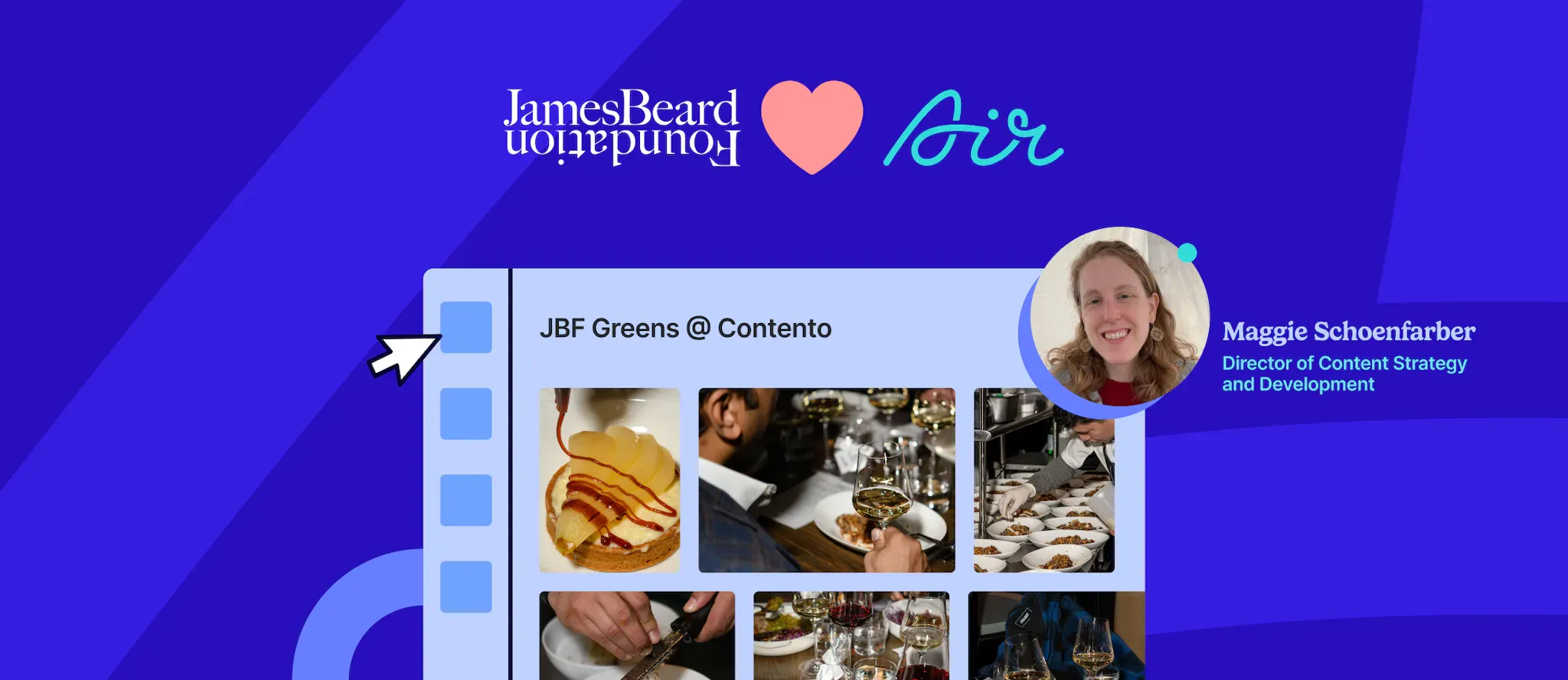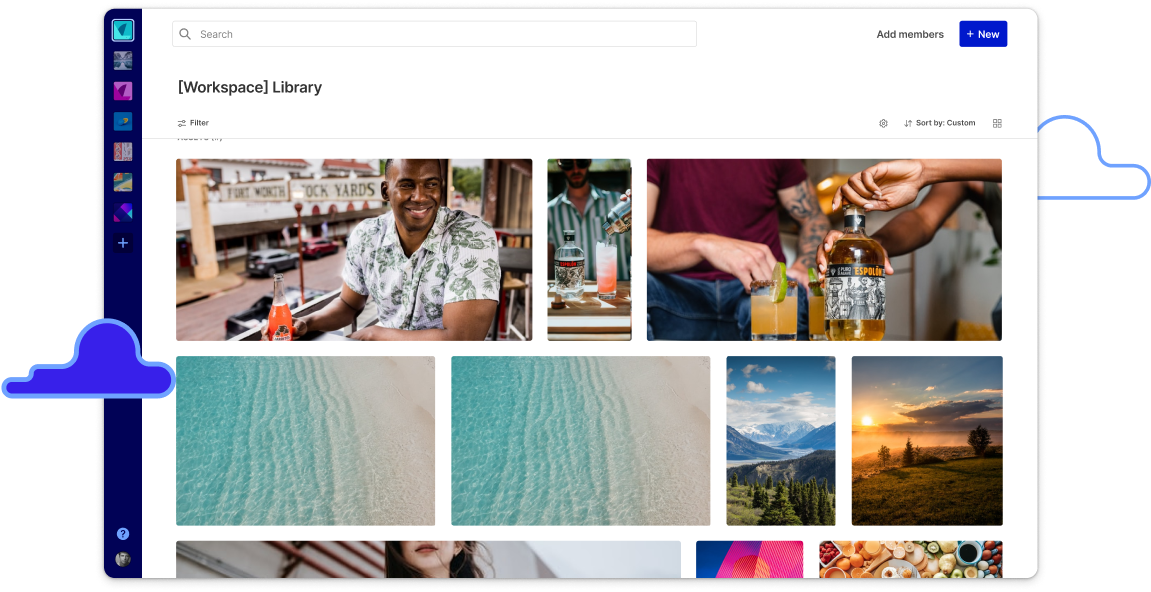Log In

Doe Beauty’s Jason Wong: “Air is the mothership for all of our creative”
Less time spent managing creative assets
Assets living in Air
Working hours saved by a single designer per year
A digital-native entrepreneur builds a beauty brand
Jason Wong, the founder of Doe Beauty, is no stranger to the media-driven nature of modern business. Even in his teens, he was monetizing his understanding of consumers’ media appetite, producing a line of products inspired by memes. With Doe, he turned his talents to a more traditional business category: beauty. With 63.1k Instagram followers at time of writing, Jason and his team have built a strong and cohesive brand with a loyal customer base. Doe’s need for visual assets spans media, from product packaging to product shots; website design to social assets. User-generated content, too, plays a significant role in their brand-building strategy.
Looking back on the transition to Air
For Doe, Air replaced Google Drive — but more broadly, Jason says:
Air replaced the way we conduct creative collaboration, even bringing work we previously conducted in Asana and Slack into the platform.
Doe’s team is small, only 7 people, so resourcing is always an important issue. A significant reason for the switch to Air: their designer was overworked. Preparing to switch from Google Drive, Doe’s head designer spent an afternoon thinking through their existing structure in that platform, then simply imported to Air in a single click Jason says it was “comically easy.” To ensure long-term workspace cleanliness, the designer also wrote up usage guidelines, to keep the whole team aligned. Jason had this to say about the aftermath of the transition:
It’s fair to say the company collectively saves half the time they spent in GDrive, Asana, Slack before. Our designer alone now saves at least an hour every day, which adds up to almost two full working weeks over a year. Also, you can’t discount the mental bandwidth savings — trying to find the picture, or the fear of not having that picture. We can quantify time, but the mental bandwidth is huge. Air gives our creatives and marketers more bandwidth to think about strategic projects.

An example of an asset living in multiple different boards.
Doe Beauty’s Creative Ops tech stack
Doe’s Creative Ops stack, before Air, was primarily Google Drive, Asana, and Slack — respectively used for storage, project management, and communication. Jason and his team found this combo to be unintuitive, a time-sink for their small team. What drew them to Air? In short, everything. Jason describes Air as “Google Drive on steroids.” The smooth visual browsing; intuitive search; flexibility in organization. Specifically, in Jason’s words:
The biggest thing is that the view of the assets is in a board form rather than a folder form. The challenge with the folder format in Google Drive; the issue with Google Drive, is that it wasn’t made for creatives, it was made for documents. There’s a lack of visual clarity, a lack of ability for an asset to live in multiple places at once.
Creating an intuitive, board-based organization system in Air
Doe organizes their Air workspace according to an asset usage-based board structure. Larger teams at enterprise-level companies might organize their workspaces by department; for a small team like Doe, where nearly everyone is involved in marketing, that would be inefficient. This is what a scalable model looks like for Doe: there will always be more Social, PR, and Website assets to add to those dedicated boards.

The ability for one asset to live in any number of boards without taking up more storage is one of Doe’s most valued Air features, says Jason:
In E-comm you understand that one group of assets needs to be synchronized across multiple channels and locations. A product picture needs to be on our website board, but also on our email asset board. You want to hold all your UGC in one board, but also distribute specific pieces of UGC to the boards for the specific products they feature. You can’t do that efficiently in Google Drive; you can in Air.
Doe’s workspace holds, in total, 175.2 GB of assets. Their Creative board holds the lion’s share, some 135 GB. Says Jason, “Our Creative folder is the primary well for content. We break it down by year, and then add assets to other boards from there.” Today, Air remains the centerpiece of Doe’s creative production pipeline. Air, says Jason, is “the mothership for all creative. Everything we produce is uploaded to Air, then distributed from there.”
Bonus: Beyond business, using Air for personal life
Jason’s Air usage extends into his personal life — besides the Doe workspace, he maintains a private Air workspace. We loved this anecdote, so we’ll share it in his words:
I used Air for my birthday party. We hired a photographer, we had 200 people show up, and they all took pictures. In my follow up message, thanking everyone for coming, I said “here’s the link to upload your assets, and here’s the link to view all the assets. Everyone uploaded the photos they took and was able to browse the gallery for pictures the photographer or other guests had taken of them, and download them for their own uses. Anyone with a ton of assets has a need for Air, definitely any creative. I think this is a platform that completely changes the way we use things we’re used to, like Google Drive.
Related Stories
designed to send team productivity soaring

How Pattern used Air to unblock marketing and creative work across four internal brands
Editorial

Mise en place: How the James Beard Foundation stays organized
Editorial

How Beautiful Destinations orchestrates global content production on Air
Editorial
Try Air for free
designed to send team productivity soaring
Ready to make the switch? Create your workspace today.
